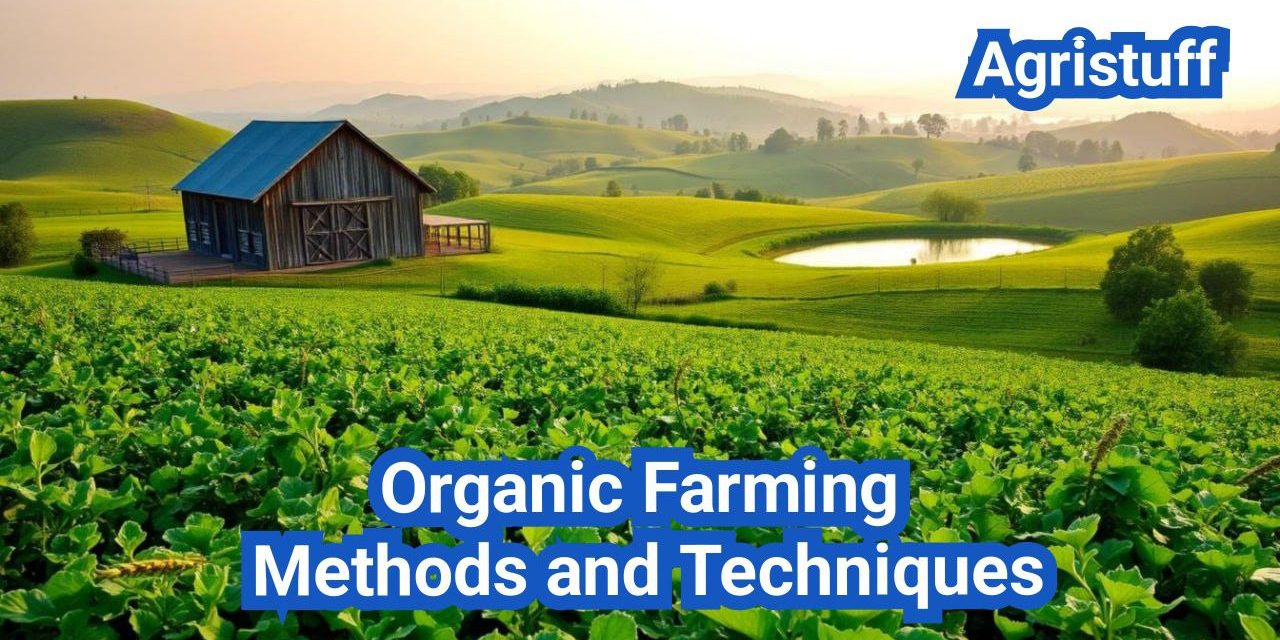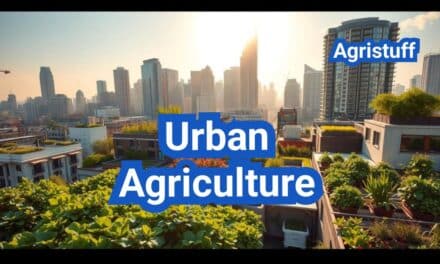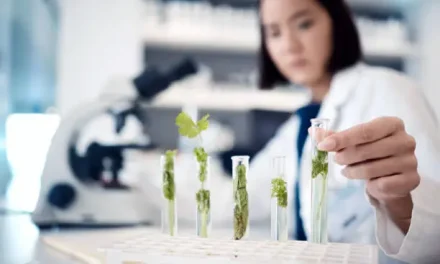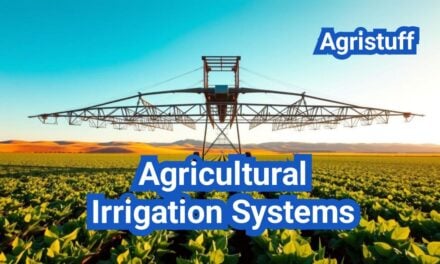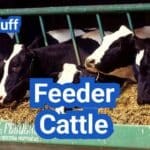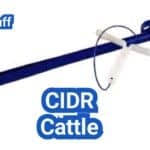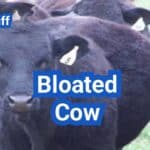Organic farming works in harmony with nature, avoiding the use of synthetic fertilizers, GMOs, and pesticides. Instead, farmers rely on alternative methods to combat insects, diseases, and weeds.
This approach not only ensures a pesticide-free harvest but also contributes to sustainable agriculture. By adopting organic practices, farmers can maintain soil health, conserve water, and promote biodiversity.
Key Takeaways
- Organic farming avoids synthetic fertilizers and pesticides.
- Alternative methods are used to control pests and diseases.
- Sustainable agriculture is promoted through organic practices.
- Soil health, water conservation, and biodiversity are maintained.
- Pesticide-free harvests are ensured through organic farming.
The Foundation of Sustainable Agriculture
At the heart of sustainable agriculture is the philosophy of working with nature, not against it, through organic farming techniques. This approach emphasizes the importance of maintaining ecological balance and promoting biodiversity.
Core Philosophy Behind Organic Farming
Organic farming places a strong emphasis on soil health as the foundation of productive agriculture. Healthy soil is vital for growing nutritious crops, and this is achieved through methods that avoid the use of synthetic fertilizers and pesticides.
The philosophy behind organic farming is rooted in the belief that the health of the soil, plants, animals, and people are interconnected. By focusing on improving soil health, organic farming contributes to a balanced ecosystem.
Environmental and Health Benefits
The environmental benefits of organic farming are numerous. By not using synthetic chemicals, organic farming helps in maintaining soil quality, conserving water, and reducing pollution.
| Benefit | Description |
|---|---|
| Improved Soil Health | Organic farming practices like crop rotation and composting enhance soil fertility and structure. |
| Biodiversity Conservation | By maintaining ecological balance, organic farming promotes biodiversity. |
| Reduced Chemical Use | Avoiding synthetic fertilizers and pesticides reduces environmental pollution. |
Organic farming not only benefits the environment but also contributes to healthier food options. By choosing organic produce, consumers support sustainable agriculture and promote their own health.
Organic Farming Methods and Their Implementation
Effective organic farming methods combine traditional knowledge with modern innovations to create resilient farming systems. Organic producers use natural processes and materials when developing farming systems—these contribute to soil, crop, and livestock nutrition, pest and weed management, attainment of production goals, and conservation of biological diversity.
Traditional vs. Modern Organic Approaches
Organic farming encompasses a range of practices, from traditional methods passed down through generations to modern techniques informed by scientific research. Traditional organic farming relies on natural processes and materials, such as crop rotation and composting, to maintain soil fertility and control pests. In contrast, modern organic approaches may incorporate advanced technologies like precision agriculture and biodynamic farming to enhance efficiency and productivity.
| Aspect | Traditional Organic Farming | Modern Organic Farming |
|---|---|---|
| Soil Management | Composting, Crop Rotation | Precision Agriculture, Soil Testing |
| Pest Control | Companion Planting, Biological Control | Integrated Pest Management (IPM), Organic Pesticides |
Systems-Based Farming Methodology
A systems-based approach to organic farming involves understanding the farm as an ecosystem where all components interact. This methodology considers the long-term effects of farming practices on soil health, biodiversity, and ecosystem services. By adopting a holistic perspective, farmers can make informed decisions that enhance the overall sustainability of their operations.
Integrating Ecological Principles
Integrating ecological principles into organic farming practices is crucial for maintaining ecosystem balance and promoting biodiversity. This includes practices like agroforestry, conservation tillage, and the use of cover crops. By mimicking natural ecosystems, organic farmers can create resilient and productive farming systems.
By combining traditional wisdom with modern techniques and adopting a systems-based approach, organic farmers can achieve significant environmental and economic benefits. This integrated methodology not only enhances soil health and biodiversity but also contributes to a more sustainable food system.
Building and Maintaining Healthy Soil

Maintaining soil health is crucial for the sustainability of organic farming practices. Healthy soil supports a diverse range of microbial life, which is essential for nutrient cycling and plant health.
Understanding Soil Biology and Structure
Soil biology encompasses a wide variety of organisms, from bacteria and fungi to insects and earthworms. These organisms play a critical role in decomposing organic matter, forming soil aggregates, and fighting plant diseases. Understanding the structure of the soil, including its texture, porosity, and water-holding capacity, is also vital for managing soil health effectively.
Natural Amendments and Minerals
Organic farmers use various natural amendments to enhance soil fertility. These include compost, animal manures, green manures, and mineral powders like lime and gypsum. Compost is particularly valuable as it is rich in humus and beneficial microbes. The application of these amendments not only improves soil fertility but also its structure, enhancing water retention and aeration.
Soil Testing and Analysis Techniques
Regular soil testing is essential to monitor soil health and fertility. Techniques include chemical tests for nutrient levels, physical tests for texture and structure, and biological tests for microbial activity. Soil analysis helps farmers make informed decisions about the application of amendments and fertilizers, ensuring that their soil management practices are optimized for crop production.
By understanding and managing soil biology and structure, using appropriate natural amendments, and conducting regular soil testing, organic farmers can maintain healthy, productive soils. This not only benefits their crops but also contributes to environmental sustainability by reducing the need for synthetic fertilizers and minimizing soil erosion.
Composting Techniques for Nutrient Cycling
Effective composting is crucial for nutrient cycling, supporting the overall sustainability of organic farming systems. Composting transforms organic waste into a valuable resource, enhancing soil fertility and structure.
Traditional Pile Composting
Traditional pile composting is a widely used method that involves creating piles of organic materials. This technique requires regular turning to ensure aerobic decomposition and minimize odors. Key benefits include improved soil structure and increased nutrient content.
Vermicomposting Systems
Vermicomposting, or worm composting, utilizes worms to break down organic matter. This method is particularly effective for processing kitchen scraps and other green waste. Vermicomposting produces a nutrient-rich compost that is ideal for seed starting and plant propagation.
Compost Tea Production and Application
Compost tea is a liquid solution made by steeping compost in water. This technique extracts beneficial microbes from the compost, creating a potent fertilizer. Application methods include foliar sprays and soil drenches, enhancing plant health and resilience.
The benefits of these composting techniques include:
- Enhanced soil fertility and structure
- Increased nutrient content for plants
- Improved soil biodiversity through beneficial microbes
- Reduced waste through recycling organic materials
By incorporating these composting techniques into organic farming practices, farmers can improve soil health, reduce environmental impact, and promote sustainable agriculture.
Cover Cropping and Green Manures

Cover cropping and the incorporation of green manures are critical strategies for maintaining soil conservation and fertility in organic farming systems. These practices not only protect the soil from erosion but also enhance its structure, increase biodiversity, and promote nutrient cycling.
Selecting Appropriate Cover Crop Species
The selection of cover crop species depends on several factors, including climate, soil type, and the primary purpose of the cover crop. Legumes, such as clover and beans, are often used for their nitrogen-fixing abilities, while grasses like rye and oats are valued for their soil-stabilizing properties.
Timing and Management Strategies
Effective cover cropping requires careful planning and management. This includes determining the optimal planting times, managing cover crop growth, and deciding when to incorporate the cover crops into the soil. Timing is crucial to ensure that the cover crops provide maximum benefits without competing with the primary crops.
Incorporation Methods for Maximum Benefit
The method of incorporating cover crops into the soil can significantly impact their effectiveness. Techniques such as tillage, mowing, or grazing can be used, depending on the cover crop species and the farm’s equipment. Proper incorporation ensures that the nutrients and organic matter from the cover crops are made available to subsequent crops.
By integrating cover cropping and green manures into their farming practices, organic farmers can enhance soil health, reduce erosion, and promote a more sustainable agricultural system.
Crop Rotation Planning for Soil Health
Crop rotation planning is a fundamental strategy for achieving sustainable agriculture and improving soil health. By carefully planning the sequence of crops, organic farmers can reduce the buildup of pests and diseases, improve soil fertility, and increase biodiversity.
Designing Multi-Year Rotation Schedules
Designing a multi-year rotation schedule requires a thorough understanding of the different crops and their effects on soil health. Rotating crops with different characteristics, such as legumes, cereals, and root vegetables, can help maintain soil fertility and structure. For example, legumes fix nitrogen in the soil, while cereals and grasses help to improve soil’s organic matter.
Plant Family Considerations
Different plant families have unique characteristics that affect soil health. For instance, the Brassica family (including broccoli and kale) can help suppress certain pests and diseases, while the Solanaceae family (including tomatoes and peppers) can be susceptible to specific soil-borne pathogens. Understanding these characteristics is crucial for effective crop rotation planning.
Balancing Cash Crops and Soil-Building Crops
A well-planned crop rotation balances cash crops with soil-building crops. Cash crops generate revenue, while soil-building crops, such as cover crops, improve soil health. A sample rotation plan might include a mix of both types of crops over a 3- to 5-year cycle.
| Year | Crop | Soil Benefit |
|---|---|---|
| 1 | Legumes (e.g., beans) | Nitrogen fixation |
| 2 | Cereals (e.g., oats) | Improves soil structure |
| 3 | Cover Crop (e.g., clover) | Soil erosion control, organic matter |
By incorporating a mix of cash and soil-building crops into a rotation plan, farmers can maintain soil health while generating revenue.
Natural Pest Management Solutions

Organic farmers employ a range of natural pest management techniques to protect their crops and maintain soil health. “The goal is to create a balanced ecosystem where crops thrive and pests are kept under control naturally,” says an expert in organic farming.
Beneficial Insect Attraction and Conservation
One effective strategy is attracting and conserving beneficial insects. These insects, such as ladybugs and lacewings, prey on pests that can damage crops. Planting a diverse range of flowers and herbs can attract these beneficial insects.
Companion Planting Strategies
Companion planting is another technique used in natural pest management. Certain plants, when grown together, can deter pests or attract beneficial insects. For example, planting marigolds with tomatoes can help deter nematodes.
OMRI-Approved Pest Control Products
When additional control is needed, organic farmers turn to OMRI-approved pest control products. These products are made from natural ingredients and are certified for use in organic farming. Examples include neem oil and insecticidal soap.
Physical Barriers and Traps
Physical barriers and traps are also effective tools in natural pest management. Row covers can prevent pests from reaching crops, while sticky traps can capture and remove pests from the field.
By combining these strategies, organic farmers can effectively manage pests without resorting to synthetic chemicals, maintaining the integrity of their organic produce.
Organic Weed Control Strategies

Weed management is a critical component of organic farming, requiring a combination of strategies to maintain soil health and crop integrity. Organic farmers implement effective weed control methods, such as mulching and strategic weeding, to keep their crops free from unwanted intruders.
Preventative Weed Management
Preventing weeds from germinating is a crucial step in organic weed control. This can be achieved through techniques such as using certified weed-free seeds and improving soil health to promote the growth of crops over weeds. Additionally, maintaining a proper soil cover through the use of cover crops or residues can suppress weed growth.
Mechanical and Manual Control Methods
When prevention is not enough, organic farmers turn to mechanical and manual methods to control weeds. Tools such as hoe weeders, flame weeders, and hand weeding are effective for small-scale farms. Regular cultivation and timely removal of weeds before they seed are crucial for reducing weed populations over time.
Mulching Systems for Weed Suppression
Mulching is a highly effective method for suppressing weeds by blocking light and preventing seed germination. Organic mulches such as straw, wood chips, and leaves not only suppress weeds but also improve soil health as they decompose. The choice of mulch material depends on availability, cost, and the specific needs of the crops being grown.
Flame Weeding and Other Alternatives
Flame weeding is an innovative technique that uses propane burners to kill weeds by applying intense heat. This method is particularly useful for controlling weeds in the early stages of growth. Other alternatives include using boiling water or specialized tools designed to disrupt weed growth without chemicals.
By integrating these strategies, organic farmers can effectively manage weeds, enhance soil health, and maintain the ecological balance of their farming systems.
Water Conservation in Organic Systems

Conserving water is a critical aspect of organic farming, ensuring the long-term sustainability of agricultural practices. As organic farming continues to grow, the need for efficient water management becomes increasingly important.
Efficient Irrigation Technologies
Efficient irrigation systems are crucial for minimizing water waste in organic farming. Techniques such as drip irrigation deliver water directly to the roots of plants, reducing evaporation and runoff. This method not only conserves water but also decreases the risk of waterlogged soil and associated problems.
Rainwater Harvesting Methods
Rainwater harvesting is another effective strategy for conserving water in organic farming. By collecting and storing rainwater, farmers can reduce their reliance on groundwater and surface water sources. This approach also helps in mitigating the impact of droughts by providing a supplementary water source.
| Method | Description | Benefits |
|---|---|---|
| Drip Irrigation | Delivers water directly to plant roots | Reduces evaporation and runoff |
| Rainwater Harvesting | Collects and stores rainwater for later use | Reduces reliance on other water sources, mitigates drought impact |
| Drought-Resistant Crops | Crops bred to thrive with minimal water | Enhances farm resilience during dry periods |
Drought-Resistant Farming Techniques
Drought-resistant farming techniques involve selecting crop varieties that are bred to be more resilient to water scarcity. These crops often have deeper root systems or other adaptations that enable them to survive with less water. By incorporating these crops into their rotation, farmers can improve the overall resilience of their farm.
Seed Selection and Preservation

The foundation of a thriving organic farm lies in its seed selection process. Organic crop producers use organic seeds and planting stocks to protect the integrity of their crops. Selecting the right seeds is not just about achieving high yields; it’s also about preserving biodiversity and ensuring the long-term sustainability of the farm.
Sourcing Organic and Non-GMO Seeds
When it comes to sourcing seeds, organic farmers have several options. They can purchase certified organic seeds or opt for non-GMO seeds if organic options are not available. It’s crucial to work with reputable suppliers who can provide documentation on the seed’s origin and genetic makeup.
Seed Saving Techniques by Crop Type
Seed saving is an age-old practice that allows farmers to preserve crop genetics and adapt to local conditions. Different crops require different techniques. For instance, saving seeds from Brassica species involves allowing the plants to flower and produce seeds, which are then harvested and cleaned.
Developing Regional Seed Adaptations
Developing regional seed adaptations is key to creating resilient crop varieties. By saving and replanting seeds from crops that perform well in specific conditions, farmers can gradually develop locally adapted varieties. This process not only enhances crop resilience but also contributes to biodiversity.
Some key practices for seed preservation include:
- Proper drying and storage techniques
- Isolation or caging to prevent cross-pollination
- Regular testing for viability
By adopting these practices, organic farmers can maintain high-quality seeds that are well-suited to their local conditions.
Seasonal Planning for Organic Farms

Seasonal planning is a cornerstone of organic farming, allowing farmers to anticipate and prepare for the challenges of different seasons. This proactive approach ensures a continuous harvest throughout the year, maximizing yields and maintaining soil health.
Creating Annual Production Calendars
Organic farmers create annual production calendars to plan for the different seasons. These calendars are essential tools that outline planting, harvesting, and maintenance schedules. By having a clear plan, farmers can better manage their resources and labor.
To create an effective production calendar, farmers should consider factors such as climate, soil type, and market demand. This involves:
- Identifying the optimal planting times for various crops
- Scheduling maintenance tasks like irrigation and pest control
- Planning for succession planting to ensure continuous production
Succession Planting Strategies
Succession planting is a technique used to maintain a continuous supply of fresh produce throughout the growing season. By planting small batches of seeds at regular intervals, farmers can avoid having all their crops mature at once.
This strategy not only helps in managing labor and equipment but also reduces the risk of crop loss due to pests or diseases. For example, planting lettuce every two weeks ensures a constant supply without overwhelming the farm with a single large harvest.
| Crop | Planting Interval | Harvest Period |
|---|---|---|
| Lettuce | 2 weeks | 4-6 weeks |
| Radish | 1 week | 3-4 weeks |
| Spinach | 3 weeks | 4-5 weeks |
Season Extension Methods
Season extension techniques allow farmers to grow crops beyond their normal season, increasing the overall productivity of the farm. Methods include using cold frames, hoop houses, and row covers to protect crops from adverse weather conditions.
These techniques can be particularly beneficial for extending the growing season into the colder months, enabling the production of cool-season crops like kale and Brussels sprouts well into winter.
Winter Planning and Preparation
Winter planning is a critical component of seasonal planning. It involves preparing the soil for the next growing season, planning for winter crops, and maintaining equipment.
Farmers should use the winter period to:
- Review the previous season’s performance and plan improvements
- Order seeds and supplies for the upcoming season
- Perform maintenance on equipment to ensure it’s ready for use
Integrating Livestock in Organic Systems

Livestock integration is a crucial aspect of organic farming, offering numerous benefits including improved soil fertility and pest management. Organic livestock producers prioritize providing living areas that encourage the health and natural behavior of their animals, reflecting concerns for animal welfare and a desire to balance productivity with both animal well-being and environmental quality.
The incorporation of livestock into organic farming systems can enhance biodiversity, improve soil health, and increase the overall resilience of the farm. By adopting practices such as rotational grazing, farmers can optimize the use of their land while promoting ecological balance.
Rotational Grazing Practices
Rotational grazing involves moving livestock to different areas of the farm to allow the land to recover and regenerate. This practice not only improves soil health but also reduces the risk of overgrazing and promotes more efficient use of pasture resources. Efficient rotational grazing can lead to increased forage production and improved animal health.
Poultry for Pest Management
Integrating poultry into organic farming systems can be an effective strategy for managing pests. Poultry can help control insect populations, reducing the need for external pest control measures. This approach also contributes to a more diverse farm ecosystem.
Organic Animal Feed and Healthcare
Organic animal feed is a critical component of organic livestock production. Farmers must ensure that the feed is free from genetically modified organisms (GMOs) and synthetic additives. Additionally, organic healthcare practices focus on preventative measures, such as vaccination and nutritional management, to maintain animal health.
Manure Management for Fertility
Effective manure management is essential for maintaining soil fertility in organic farming systems. Manure can be used as a natural fertilizer, improving soil structure and providing essential nutrients for crops. Proper handling and application of manure are crucial to maximizing its benefits while minimizing environmental impacts.
Transitioning to Organic Production

Transitioning to organic production is a multifaceted process that requires meticulous planning and a deep understanding of organic farming principles. This transition involves not just a change in farming practices, but a commitment to sustainable agriculture that prioritizes soil health, biodiversity, and efficient water use.
Developing a Conversion Timeline
Creating a conversion timeline is a critical first step in transitioning to organic production. This timeline outlines the necessary steps to transform your farm or agricultural operation to meet organic standards. It typically involves a three-year transition period during which the land must be free of prohibited substances and managed according to organic practices.
- Year 1: Begin by assessing your current farming practices and identifying areas that need improvement to meet organic standards.
- Year 2: Implement changes such as introducing cover crops, organic amendments, and integrated pest management techniques.
- Year 3: Continue to refine your organic practices, prepare for the organic certification inspection, and maintain detailed records.
Managing the Certification Process
Obtaining organic certification is a rigorous process that involves several steps, including selecting a certifying agency, submitting an application, and undergoing an on-site inspection. It’s essential to choose a certifying agency that is accredited by the USDA’s National Organic Program (NOP) and to ensure that all required documentation is accurate and comprehensive.
Key documents required for certification include:
| Document | Description |
|---|---|
| Organic System Plan | A detailed plan outlining how you will manage your farm according to organic principles. |
| Field History | Records of previous land use, including any applications of prohibited substances. |
| Soil Testing Records | Results of soil tests conducted to ensure soil health and fertility. |
Economic Considerations During Transition
Transitioning to organic production can have significant economic implications. While organic products often command a higher price, the transition period can be costly due to the need to invest in new practices, equipment, and potentially, certification fees. It’s crucial to develop a financial plan that accounts for these costs and explores potential revenue streams, such as organic price premiums or government incentives.
Common Challenges and Solutions
Farmers transitioning to organic production often face challenges such as managing pests and diseases without synthetic chemicals, improving soil fertility, and navigating the certification process. Solutions include adopting integrated pest management strategies, using organic amendments, and seeking guidance from experienced organic farmers or consultants.
Tools and Equipment for Organic Farmers
Organic farmers utilize various tools and machinery to manage their farms sustainably. The right equipment is crucial for maintaining efficiency, reducing labor, and ensuring the quality of produce.
Essential Hand Tools and Implements
Hand tools are the backbone of organic farming, allowing for precise and gentle handling of crops. Essential hand tools include high-quality hoes, forks, and rakes that are durable and designed for specific tasks.
Implements such as precision seeders and cultivators help in planting and maintaining crops efficiently. These tools are often designed to work in tight spaces and to minimize soil disturbance.
Small-Scale Machinery Options
For larger tasks, small-scale machinery is indispensable. Tractors, though often associated with large-scale farming, have smaller versions suitable for organic farms. Compact tractors can be used for a variety of tasks, from plowing to hauling.
Other machinery includes rotary tillers for soil preparation and mechanical harvesters for efficient crop collection. The choice of machinery depends on the farm’s size, crop type, and the farmer’s preference for mechanization.
Appropriate Technology Solutions
Appropriate technology in organic farming involves using innovative, efficient, and environmentally friendly solutions. This can include drip irrigation systems for water conservation and solar-powered pumps for irrigation.
Such technologies not only reduce the environmental impact but also improve the farm’s productivity and sustainability.
Maintenance and Care of Equipment
Regular maintenance is crucial for extending the life of farming equipment. This includes routine cleaning, lubrication of moving parts, and timely repairs.
Proper care ensures that the equipment remains in good working condition, reducing downtime and improving overall farm efficiency.
Marketing and Selling Organic Produce
The success of organic farming ventures largely depends on the ability to market and sell produce effectively. With the increasing demand for organic products, farmers have numerous opportunities to capitalize on their produce through various marketing channels.
Direct Marketing Channels
Direct marketing allows organic farmers to connect directly with consumers, increasing profit margins and building customer loyalty. Some effective direct marketing channels include:
- Farmers’ markets, where farmers can showcase their produce and interact with customers.
- Online platforms, such as e-commerce websites and social media, to reach a broader audience.
- Community Supported Agriculture (CSA) programs, where consumers purchase shares of the farm’s produce.
Value-Added Product Development
Creating value-added products is a strategic way to increase the profitability of organic farming operations. This can involve:
- Processing raw produce into jams, sauces, or dried fruits.
- Developing branded products that appeal to specific consumer segments.
- Offering ready-to-eat or pre-prepared meals using organic ingredients.
Building Customer Relationships
Establishing strong relationships with customers is crucial for the long-term success of organic farming businesses. Farmers can achieve this by:
- Providing exceptional customer service and support.
- Engaging with customers through social media and newsletters.
- Offering loyalty programs or subscription services.
Organic Certification as a Marketing Tool
Obtaining organic certification can significantly enhance the marketability of organic produce. It assures consumers of the product’s quality and adherence to organic farming standards, thereby increasing consumer trust and loyalty.
“Organic certification is not just a regulatory requirement; it’s a powerful marketing tool that can differentiate your products in a crowded marketplace.”
By leveraging direct marketing channels, developing value-added products, building strong customer relationships, and utilizing organic certification, organic farmers can effectively market and sell their produce, ultimately driving business success.
Conclusion
Mastering organic farming methods is a fulfilling journey that allows you to contribute to a healthier planet while enjoying the benefits of fresh, organic produce. By adopting the techniques and strategies outlined in this article, farmers and gardeners can play a crucial role in promoting sustainable agriculture.
Organic farming methods not only enhance soil health and biodiversity but also help mitigate the environmental impact of conventional farming practices. As we move towards a more sustainable future, the importance of organic farming methods cannot be overstated.
By integrating ecological principles, conserving water, and promoting natural pest management solutions, we can create a more resilient and environmentally friendly food system. As we conclude our exploration of organic farming methods, it’s clear that sustainable agriculture is key to a healthier environment and a more sustainable future.
FAQ
What is organic farming, and why is it important?
Organic farming is a method of farming that avoids the use of synthetic fertilizers, pesticides, and genetically modified organisms. It’s essential for sustainable agriculture, promoting soil health, biodiversity, and environmental stewardship.
What are the core principles of organic farming?
The core principles of organic farming include sustainability, environmental stewardship, and the use of natural methods to control pests and diseases. Organic farming focuses on building and maintaining healthy soil, conserving water, and promoting biodiversity.
How does organic farming benefit the environment?
Organic farming benefits the environment by promoting soil health, conserving water, and reducing pollution. It also helps to protect biodiversity by creating a welcoming environment for beneficial insects and wildlife.
What are some common organic farming methods?
Common organic farming methods include composting, cover cropping, crop rotation, and natural pest management. These methods help to build and maintain healthy soil, reduce pests and diseases, and promote biodiversity.
How can I improve soil health in my organic farm?
To improve soil health, you can use natural amendments and minerals, test your soil regularly, and adopt conservation tillage practices. You can also use cover crops and crop rotation to promote soil fertility and structure.
What is composting, and how does it work?
Composting is the process of breaking down organic materials into a nutrient-rich soil amendment. It works by creating a diverse community of microorganisms that decompose the organic matter, resulting in a valuable resource for promoting soil health.
How can I manage pests naturally in my organic farm?
You can manage pests naturally by using techniques such as companion planting, introducing beneficial insects, and using physical barriers and traps. You can also use OMRI-approved pest control products as a last resort.
What are some effective organic weed control strategies?
Effective organic weed control strategies include preventative weed management, mechanical and manual control methods, and mulching systems. You can also use techniques such as flame weeding to control weeds.
How can I conserve water in my organic farm?
You can conserve water by using efficient irrigation technologies, harvesting rainwater, and adopting drought-resistant farming techniques. You can also use mulching and cover cropping to reduce soil moisture loss.
Why is seed selection and preservation important in organic farming?
Seed selection and preservation are crucial in organic farming because they allow you to choose varieties that are well-suited to your climate and soil conditions. By saving seeds, you can also preserve genetic diversity and promote biodiversity.
How can I transition to organic production?
To transition to organic production, you need to develop a conversion timeline, manage the certification process, and consider economic factors during the transition period. You should also be prepared to address common challenges and solutions that may arise during the transition.
What are some essential tools and equipment for organic farmers?
Essential tools and equipment for organic farmers include hand tools and implements, small-scale machinery options, and appropriate technology solutions. Regular maintenance and care of equipment are also crucial to ensure productivity and efficiency.
How can I market and sell my organic produce?
You can market and sell your organic produce by using direct marketing channels, developing value-added products, and building customer relationships. You can also use organic certification as a marketing tool to differentiate your products.
What is the importance of crop rotation planning in organic farming?
Crop rotation planning is essential in organic farming because it helps to maintain soil health, reduce pests and diseases, and promote biodiversity. By designing multi-year rotation schedules, you can balance cash crops with soil-building crops and promote sustainable agriculture.
How can I integrate livestock into my organic farm?
You can integrate livestock into your organic farm by adopting rotational grazing practices, using poultry for pest management, and providing organic animal feed and healthcare. You can also use manure management to promote soil fertility.

